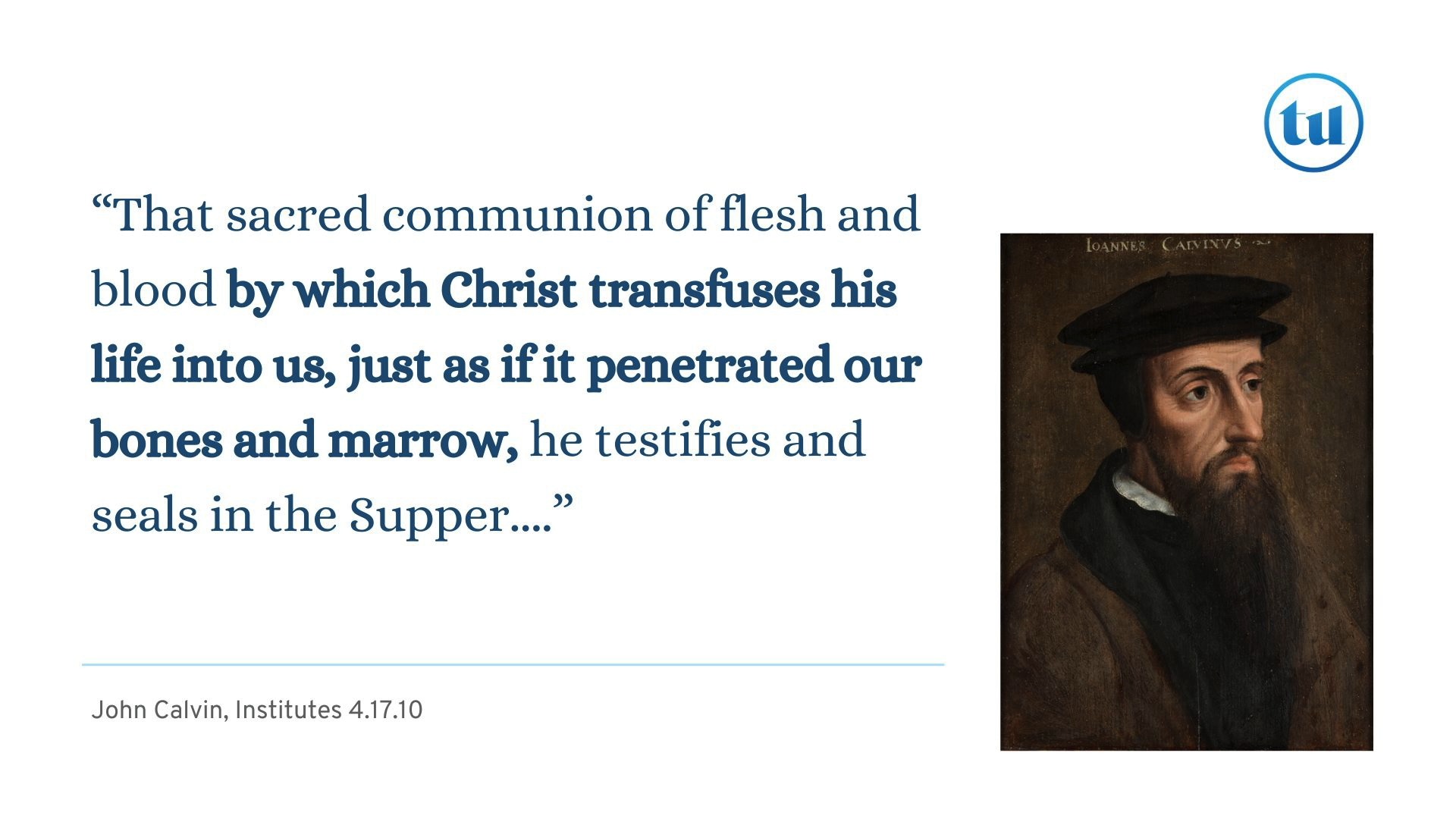The various views on how Christ is present in the elements of the Lord’s Supper, fall into four categories:
- Memorialist Views (Zwinglian)
- Spiritual Presence (Reformed)
- Consubstantiation (Lutheran)
- Transubstantiation (Roman Catholic)
Gavin Ortlund has been very helpful on this issue of what “Real Presence” (or “Spiritual Presence”) is and how it is a valid and historic protestant view on Christ being present in the supper.
Resources:
- The Lord’s Supper: A Reformed View Historic reformed theology views the Lord’s Supper as a central, mysterious, an realistic spiritual feasting on Christ by faith. It is not a mere memorial but a powerful means of grace requiring self-examination and love, ultimately offering comfort and hope in Christ’s mercy.
- Why Believe in Real Presence in the Eucharist? Real Presence is the idea of Christ’s body and blood being truly present in the Eucharist for believers. It is supported by scriptural language of participation, and is the nearly unanimous position throughout church history (including the historic Baptist position). It is also a fitting way to understand the Supper as an application of Christ’s sacrifice.
- A Baptist Case for Real Presence in the Eucharist Historic Baptists traditionally held a spiritual presence view of the Eucharist, where believers by faith truly feed on Christ and his benefits through the elements. This is distinct from transubstantiation where the actual substance of the elements is held to change into that of Christs flesh and blood. “Real Presence” is tied to faith and the presence of the true Gospel.
- Baptist-Catholic Dialogue on the Eucharist (w/ Dr. Gavin Ortlund and Dr. Brett Salkeld) Gavin Ortlund dialogues with Dr. Brett Salkeld as they work through where they agree, and where they disagree about their views (Reformed Baptist & Catholic). This discussion is very helpful to understanding the nuance of how the “Real Presence” view is quite distinct from the Catholic notion of Transubstantiation, and should not be confused with it. Dr. Salkeld is great in this interview, as he has read and appreciates the reformers, and even if he disagrees with some points, he does not caricature them, but deals very honestly with the topic.
Christ can really be present in the elements of his supper, and it not be a merely representational or memorial ordinance. Christians can feast on Christ, truly participating in his body and experiencing his sacrifice. This has been the historic view of all manner of Christians, and was the historic view of Baptists until recently when the Zwinglian Memorial view began to take over.

Gavin Ortlund
[The spiritual presence view makes] a distinction here… We’re feasting upon Christ but not in a carnal way… So one way to put it is this: this is a spiritual encounter, it’s dynamic not static. The organ of reception by which Christ is taken in is not the stomach, properly, it’s the soul. The eating is the occasion for this larger spiritual thing that is happening. Don’t think of it in terms of containment like “Christ’s body is now in this little wafer and I can take Christ’s body and I can throw it on the ground, or I can take Christ’s body and chuck it over there.” No… Sometimes the language in the reformed tradition will be, [that] “there’s a presentation of Christ” rather than just “Christ is present” or it’ll be “Christ is in and with, or in and through the elements.” Think of it like this, the Holy Spirit is doing something. Christ is giving himself to us through the elements. But you have to have faith, and you can understand that in too static a way. So that’s why they were so much concerned to eat and drink, and not just to look at them [(the Elements)].